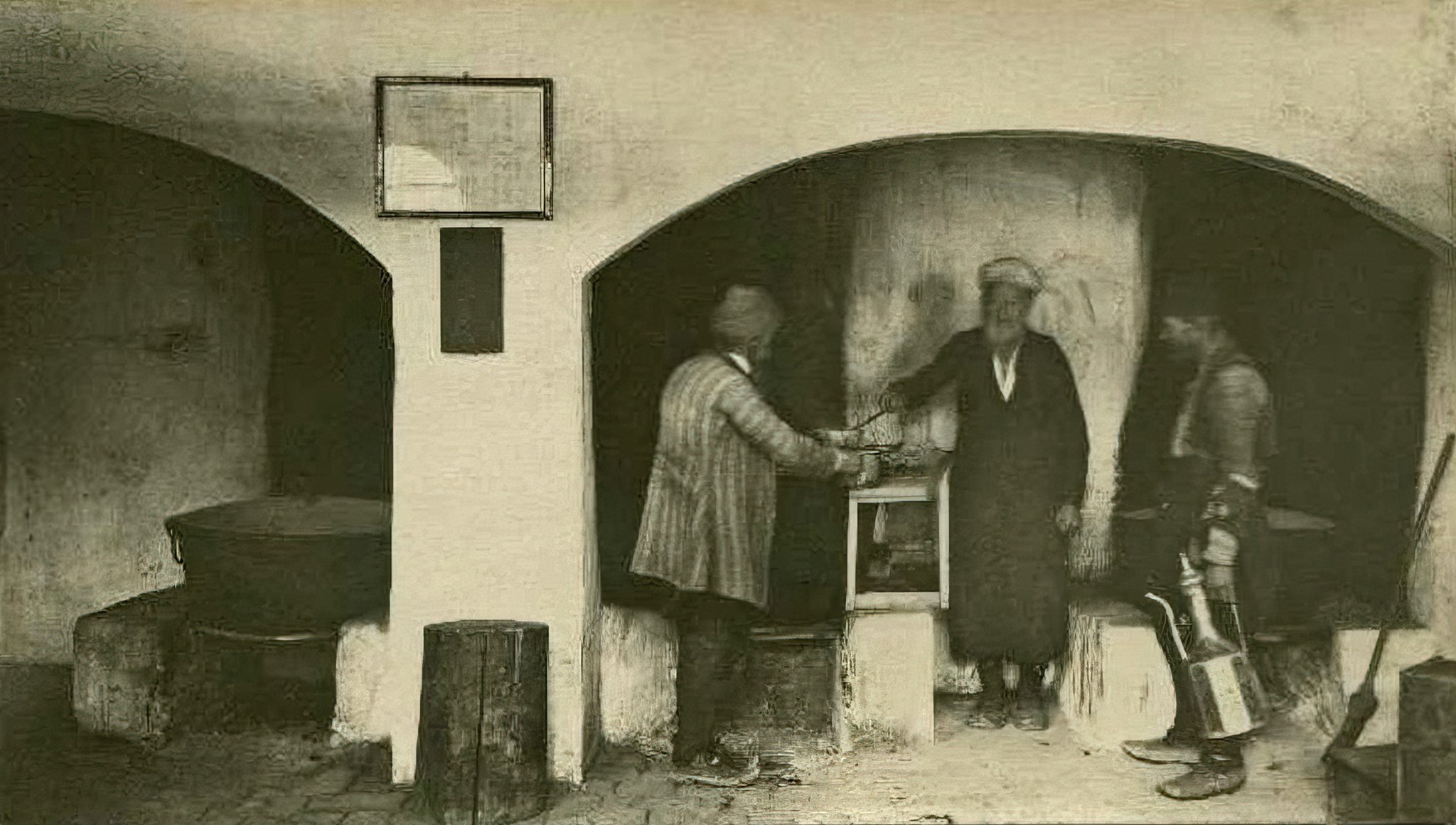
CHARITY
Author: Osman Lavić, MA, Gazi Husrev-beg Library in Sarajevo • Illustration: Gazi Husrev-beg’s imaret • Source: Gazi Husrev-beg Library

Allocating part of assets for certain categories of the society is one of the main determinants of Islamic teaching. It is the obligation of zakat, zakat al-Fitr, qurban, helping orphans, the poor,the overindebted and, generally, people in need. It is a topic of many Qur’anic ayats, Prophet’s sayings and later elaboration of these sources of Islam. Having adopted Islam in the mid-15th century, Bosniaks found various modalities which were adequate and suitable for the time they lived in to fulfill this obligation. Contributions to this topic were also given by Mustafa Pruščak and Sheikh Alija, in their theoretical elaboration. Their manuscripts on this topic, written in the 18th century as the answer to increasingly prominent crisis and the need to take care of the poor part of population due to the weakening of the economic and administrative power of the Ottoman Empire, have been preserved. The institution of waqf was used as the most appropriate form of fulfilling this religious duty. There is almost no endowment charter (vakufnama) which, partly or fully, does not deal with satisfying humanitarian needs of the population, sometimes even of animals. Doing hajrat (good deeds) in the form of waqf encompassed all layers of the population and eventually evolved into a true cult. Depending on financial abilities, the most frequently endowed items included land and facilities which could satisfy religious, cultural-educational and humanitarian needs. The poorer part of the population gave their contribution by making wells, constructing roads, planting orchards and other activities. It is proven by tens of thousands of waqfs endowed by all layers of society, even women and children.
While Bosnian king Stjepan Tomašević resided in Bobovac near Visoko, Isa-beg Ishaković, by a an endowment charter of 1462, founded the first caravanserai in Sarajevo, a place where travelers could spend the night free of charge and get food for themselves and their horses. The musafirhana (zawiyah - sanctuary) consisted of three houses, a stable and a large fenced courtyard, and corresponded to what we would presently refer to as a complex.
It was followed by inns as utilitarian and caravanserais as humanitarian facilities. Their construction was initiated by Kemal-beg, Skender-beg and Gazi Husrev-beg in Sarajevo, Mehmed-pasha in Banja Luka, Mustafa-beg in Rudo and Banja Luka, Sinan-beg in Čajniče, Mustafa-pasha in Novo Jajce, hadži Bali in Mostar, Mehmed-pasha Kukavica in Foča and Prijepolje, Karađoz-beg in Potoci, Čičevo and Konjic, Musa-pasha in Nova Kasaba and others.
Facilities with the same purpose, though by rural roads and with somewhat more modest equipment were labeled as musafirhanas by travel writers; travelers could there get food for themselves and their horses free of charge for three days and three nights. Next to caravanserais and musafirhanas, or completely separated from them, there were imarets, public kitchens where food was prepared for poor pupils of educational institutes, travelers, clerks in some institutions which did not have income of their own and others. The waqf provided income for these humanitarian institutions from endowed trade and other facilities which were rented with clearly defined procedures of running business, or with cash. Vakufnamadefined operation of these institutions, accurately prescribing how much of which victual should be used, the kind of food, quantity and time of serving. Everything that exceeded needs of these institutions was regularly distributed to poor children of the respective settlement. European travel writers referred to these institutions as to Almonetes (inns)and always pointed out that they provide beds for “Arbanasi, Turks, Greeks, Jews, Armenians, Franks”. “There, every traveler with a horse can get rice, meet, pilaf and some plum pasta, and horses can get their fodder, and all these are dispensed for the will of God”. Musafirhanas were also built next to Catholic and Orthodox monasteries. At some places separate konaks, lodgings which were maintained by inhabitants of this place and which did not have source of financing ensured by a waqf, were founded.
The great number of hans (inns) is confirmed by the data that in the early 20th century Hamdija Kreševljaković recorded 134 small or big settlements in Bosnia and Herzegovina which had the determiner ‘han’ in their names; only in Sarajevo there were over sixty hans. Vakufnamas of Mustafa Kizlar-aga from Varcar-Vakuf, Ćejvan Ćehaja from Mostar and many other waqifs (donors) encouraged care of poor children who attended schools, provided clothes, food, even candies and qurban meet during the “joy of the hearts of the poor”.
Compassion for others was expressed by caring for diverse needs of the poor layers of society (procurement of cauldrons for poor bridegrooms’ weddings, buying attire for poor girls, settling taxes for poor members of the congregation, binding books for poor children, maintaining public toilets). Besides waqfs, the institutions of zakat, zakat al-Fitr, and any kind of sadaqah (voluntary charity) were also aimed at demonstrating charity for the poor and the sick.

